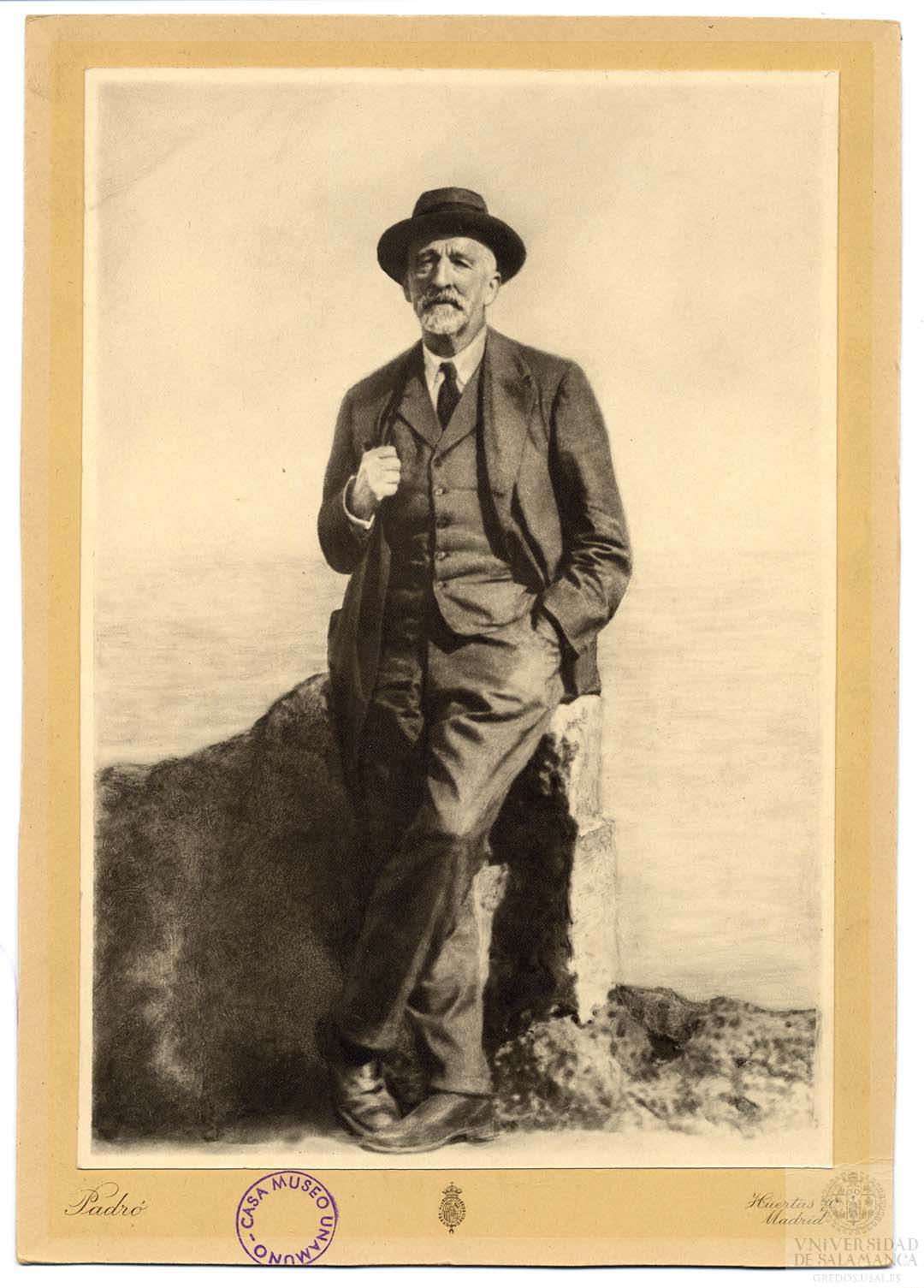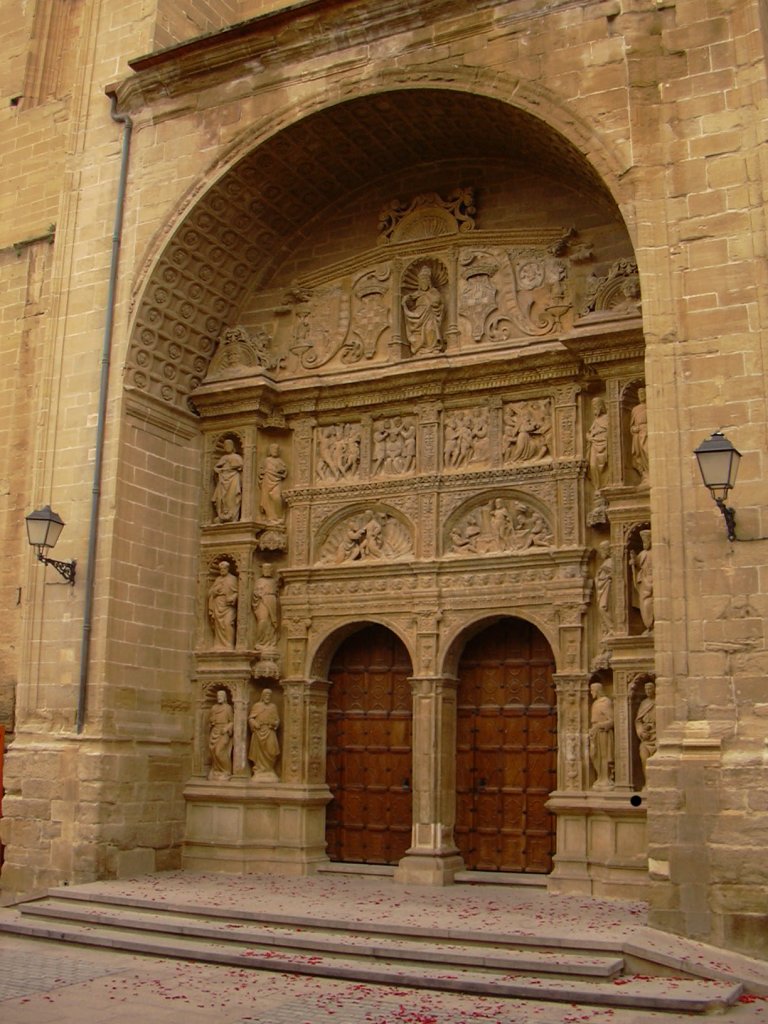|
Manuel Bartolomé Cossío
Manuel Bartolomé Cossío (22 February 1857 – 2 September 1935) was a Spanish art historian and Krausist teacher. Born in Haro, La Rioja, he entered the Institución Libre de Enseñanza, where he was the godson and favourite pupil of Francisco Giner de los Ríos as well as his inseparable companion and successor. He also wrote a monumental study of El Greco. He was director of the Museo Pedagógico Nacional and president of the Misiones Pedagógicas, becoming "the most eminent figure in Spanish pedagogy in the period 1882 to 1935", two years after his death. Eugenio M. Otero Urtaza, "Bartolomé Cossío. Trayectoria vital de un educador.", p. 41 He died at Collado Mediano in Madrid. Biography He was the son of Natalia Cossío Salinas and Patricio Bartolomé Flores, judge of the first instance in Haro. He spent part of his childhood in Aranda de Duero, Sepúlveda, and Arévalo (places that he will always evoke throughout his life). Training After passing through the Institute ... [...More Info...] [...Related Items...] OR: [Wikipedia] [Google] [Baidu] |
Krausism
Krausism is a doctrine named after the German philosopher Karl Christian Friedrich Krause (1781–1832) that advocates doctrinal tolerance and academic freedom from dogma. One of the philosophers of identity, Krause endeavoured to reconcile the ideas of a monotheistic singular God (as understood by faith) with a pantheistic or empirical understanding of the world. According to Krause, divinity, which is intuitively known by conscience, is not a personality (because personality implies limitations), but an all-inclusive essence (''Wesen''), which contains the universe within itself. This cosmology and theory of the nature of God, known as panentheism, is a combination of monotheism and pantheism. Krause's theory of the world and of humanity is a form of philosophical idealism. Spanish Krausism Krausism was widespread in Restoration Spain, where it reached its maximum practical development, thanks to the work of its promoter, Julián Sanz del Rio (1814-1869), the Free Institu ... [...More Info...] [...Related Items...] OR: [Wikipedia] [Google] [Baidu] |
Haro, La Rioja
Haro () is a town and municipality in the northwest of La Rioja province in northern Spain. It produces red wine, and hosts the annual Haro Wine Festival. Its architectural heritage includes the plateresque main entrance of the Church of Santo Tomás, the work of Felipe Vigarny, numerous palaces, and the old town, which was declared a Historic-Artistic Site in 1975. Haro was the first town in Spain to have electric street lighting. History There are several theories about the founding of Haro, though the most realistic theory is that of Domingo Hergueta, who argued that before the town, there was a lighthouse ( es, faro) near the village of Cerro de la Mota which illuminated the mouth of the Ebro river. The town was named for the lighthouse, and ''Faro'' later evolved into ''Haro''. During the Roman rule of Hispania, a fort called Castrum Bibilium was built in the cliffs of Bibilio. The first mention of Haro dates back to the year 1040, in a document of king García Sánchez I ... [...More Info...] [...Related Items...] OR: [Wikipedia] [Google] [Baidu] |
Institución Libre De Enseñanza
La Institución Libre de Enseñanza (ILE, English: ''The Free Institution of Education''), was an educational project developed in Spain for over half a century (1876–1936). The institute was inspired by the philosophy of Krausism, first introduced to the Complutense University of Madrid by Julián Sanz del Río, and which, despite being subsequently ejected from that university, was to have a significant impact on intellectual life in Restoration Spain. The institution was founded in 1876 by a group of disaffected university professors, including Francisco Giner de los Ríos, Gumersindo Azcarate, Teodoro Sainz Rueda and Nicolás Salmerón, who distanced themselves from the main university campus in Madrid to achieve academic freedom. They declined to adjust their teaching to any official religious dogma or the moral and political imposition of the time. Consequently, they had to continue their educational work outside the state sector by creating a secular private educational ... [...More Info...] [...Related Items...] OR: [Wikipedia] [Google] [Baidu] |
Francisco Giner De Los Ríos
Francisco Giner de los Ríos (10 October 1839 in Ronda, Spain – 18 February 1915 in Madrid) was a philosopher, educator and one of the most influential Spanish intellectuals at the end of the 19th and the beginning of the 20th century. Biography He studied philosophy in Barcelona and Granada and eventually became professor of the philosophy of law and of international law at the University of Madrid. He was strongly influenced by the ideas of the Kantian German philosopher Karl Christian Friedrich Krause (as imported into Spain by Julián Sanz del Río and became an important exponent of " Krausismo" in Spain. He openly criticized the government for its attempts to stifle academic freedom. As a consequence, in 1875, he lost his chair at the university, which led to what can be seen as his major achievement: the 1876 foundation of the ''Institución Libre de Enseñanza'' (Institute of Free Teaching), a private school of higher learning. He dedicated his life to the formation ... [...More Info...] [...Related Items...] OR: [Wikipedia] [Google] [Baidu] |
El Greco
Domḗnikos Theotokópoulos ( el, Δομήνικος Θεοτοκόπουλος ; 1 October 1541 7 April 1614), most widely known as El Greco ("The Greek"), was a Greek painter, sculptor and architect of the Spanish Renaissance. "El Greco" was a nickname, and the artist normally signed his paintings with his full birth name in Greek letters, (), often adding the word (), which means Cretan. El Greco was born in the Kingdom of Candia (modern Crete), which was at that time part of the Republic of Venice, Italy, and the center of Post-Byzantine art. He trained and became a master within that tradition before traveling at age 26 to Venice, as other Greek artists had done.J. Brown, ''El Greco of Toledo'', 75–77 In 1570, he moved to Rome, where he opened a workshop and executed a series of works. During his stay in Italy, El Greco enriched his style with elements of Mannerism and of the Venetian Renaissance taken from a number of great artists of the time, notably Tinto ... [...More Info...] [...Related Items...] OR: [Wikipedia] [Google] [Baidu] |
Museo Pedagógico Nacional
Museo may refer to: * Museo, 2018 Mexican drama heist film *Museo (Naples Metro) Museo is a station on line 1 of the Naples Metro. It was opened on 5 April 2001 as the eastern terminus of the section of the line between Vanvitelli and Museo. On 27 March 2002 the line was extended to Dante Dante Alighieri (; – 14 S ..., station on line 1 of the Naples Metro * Museo, Seville, neighborhood of Seville, Spain {{disambiguation ... [...More Info...] [...Related Items...] OR: [Wikipedia] [Google] [Baidu] |
Misiones Pedagógicas
Misiones (, ''Missions'') is one of the 23 provinces of Argentina, located in the northeastern corner of the country in the Mesopotamia region. It is surrounded by Paraguay to the northwest, Brazil to the north, east and south, and Corrientes Province of Argentina to the southwest. This was an early area of Roman Catholic missionary activity by the Society of Jesus in what was then called the Province of Paraguay, beginning in the early 17th century. In 1984 the ruins of four mission sites in Argentina were designated World Heritage Sites by UNESCO. History Indigenous peoples of various tribes lived in the area of the future province for thousands of years. At the time of European encounter, it was occupied by the Kaingang and Xokleng tribes, later followed by the Guarani tribe. The first European to visit the region, Sebastian Cabot, discovered Apipé Falls while navigating the Paraná River in December 1527. In 1541 Álvar Núñez Cabeza de Vaca reached the Iguazú Falls ... [...More Info...] [...Related Items...] OR: [Wikipedia] [Google] [Baidu] |
Entrada á Quinta De San Vitorio, Nas Mariñas Betanceiras, Onde O Escritor Residíu Os Derradeiros Anos Da Sua Vida
Entrada is a Spanish or Portuguese word meaning ''entry'' and may refer to: *Entrada Sandstone, a geological formation spread across Wyoming, Colorado, New Mexico, Arizona and Utah *Entradas, a town in Castro Verde, Portugal *La Entrada, a town in Honduras *La Entrada al Pacífico La Entrada al Pacífico is a trade corridor designated as "Trade Corridor 56" by the Intermodal Surface Transportation Efficiency Act. The corridor is an international project between Mexico and the United States as a route from the Pacific Ocean po ..., a trade corridor between Mexico and the United States * "Entrada" (''Fringe''), an episode of the television series ''Fringe'' {{disambiguation, geo ... [...More Info...] [...Related Items...] OR: [Wikipedia] [Google] [Baidu] |
Manuel Bartolomé Cossío (Diario Ahora 1931) Retrato
Manuel Bartolomé Cossío (22 February 1857 – 2 September 1935) was a Spanish art historian and Krausist teacher. Born in Haro, La Rioja, he entered the Institución Libre de Enseñanza, where he was the godson and favourite pupil of Francisco Giner de los Ríos as well as his inseparable companion and successor. He also wrote a monumental study of El Greco. He was director of the Museo Pedagógico Nacional and president of the Misiones Pedagógicas, becoming "the most eminent figure in Spanish pedagogy in the period 1882 to 1935", two years after his death. Eugenio M. Otero Urtaza, "Bartolomé Cossío. Trayectoria vital de un educador.", p. 41 He died at Collado Mediano in Madrid. Biography He was the son of Natalia Cossío Salinas and Patricio Bartolomé Flores, judge of the first instance in Haro. He spent part of his childhood in Aranda de Duero, Sepúlveda, and Arévalo (places that he will always evoke throughout his life). Training After passing through the Institute of ... [...More Info...] [...Related Items...] OR: [Wikipedia] [Google] [Baidu] |
Tumba De Francisco Giner De Los Ríos Y Otros Miembros De La Institución Libre De Enseñanza, Cementerio Civil De Madrid
Tumba may refer to: Places * Tumba, Sweden, a town in Botkyrka, Sweden * Tumba, Rwanda, a town in Rulindo District, Rwanda * Tumba (Skopje), an ancient Neolithic settlement in North Macedonia * Tumba (Vranje), a village in the Vranje municipality of southern Serbia * Tumba Peak (Šar), a mountain peak in south-east Kosovo * Tumba Peak (Belasica), a mountain peak where the borders of Bulgaria, Greece and the Republic of Macedonia meet * , a mountain peak in western Bulgaria * Lake Tumba, a lake in the Democratic Republic of the Congo * Bara Tumba, an ancient living area from Neolithic times in the Republic of Macedonia * Veluška Tumba, an ancient living area from Neolithic times in the Republic of Macedonia * La Tumba (Caracas), an underground detention facility in Caracas, Venezuela * Tumba Church, a church building in Tumba, Botkyrka, Sweden * Tumba Ice Cap, covering the western half of Chavdar Peninsula Music * Tumba (music), a native musical form that is played in Aruba and C ... [...More Info...] [...Related Items...] OR: [Wikipedia] [Google] [Baidu] |
Joaquín Sorolla, Manuel Bartolomé Cossío (1908)
Joaquín or Joaquin is a male given name, the Spanish version of Joachim. Given name * Joaquín (footballer, born 1956), Spanish football midfielder * Joaquín (footballer, born 1981), Spanish football winger * Joaquín (footballer, born 1982), Spanish football forward * Joaquín Almunia, Spanish politician * Joaquín Andújar, professional baseball player in the Houston Astros organization * Joaquín Arias, professional baseball player in the San Francisco Giants organization * Joaquín Balaguer, President of the Dominican Republic * Joaquín Belgrano, Argentine patriot * Joaquín Benoit, professional baseball player for the San Diego Padres * Joaquin Castro, American politician from San Antonio, Texas * Joaquín Cortés, Spanish flamenco dancer * Joaquín De Luz, Spanish New York City Ballet principal dancer * Joaquin Domagoso, Filipino actor and model * Joaquín "El Chapo" Guzmán, Mexican drug lord * Joaquín Hernández, Mexican footballer * Joaquín "Jack" García, Cuban-Am ... [...More Info...] [...Related Items...] OR: [Wikipedia] [Google] [Baidu] |


.jpg)

.jpg)